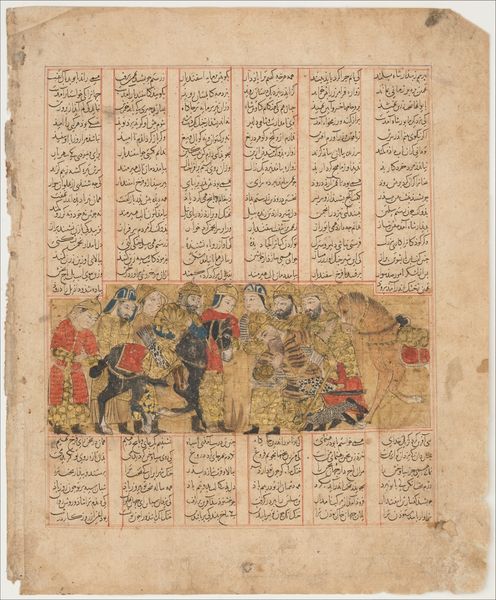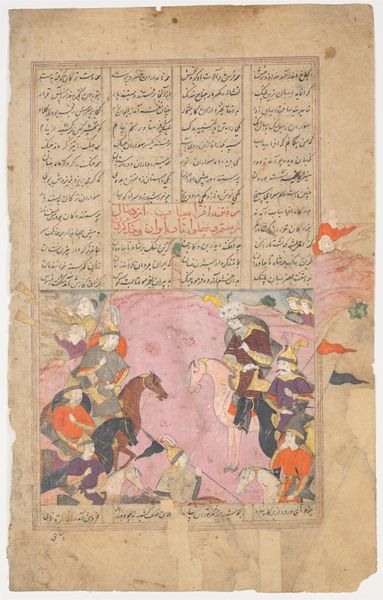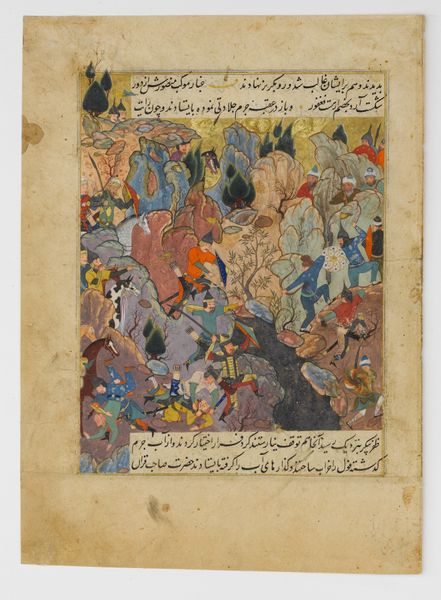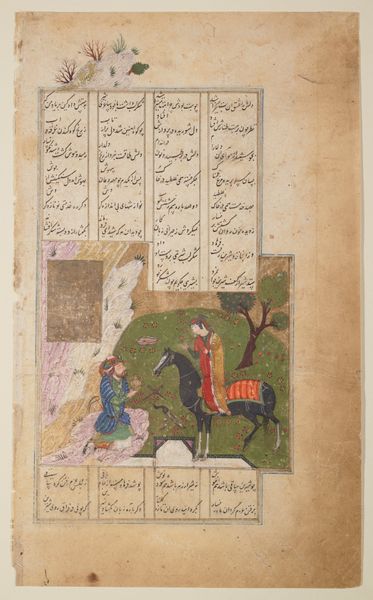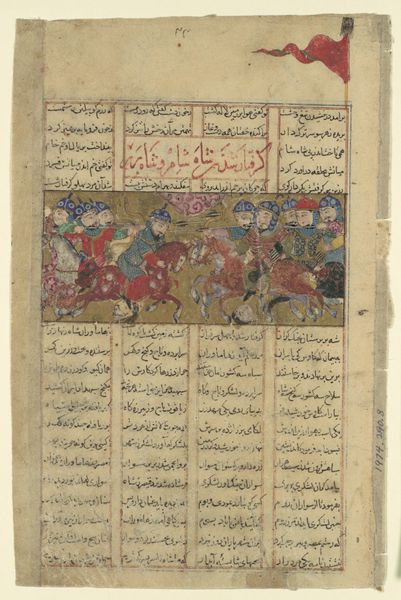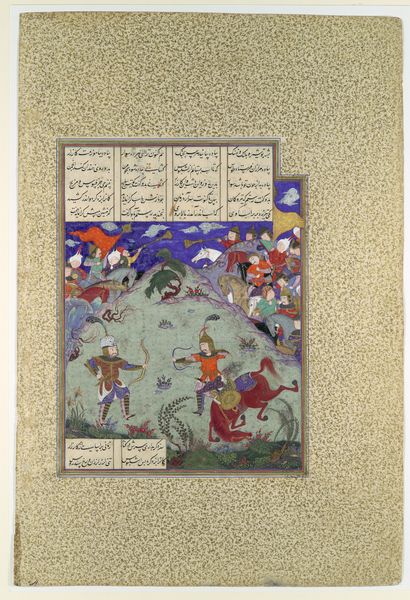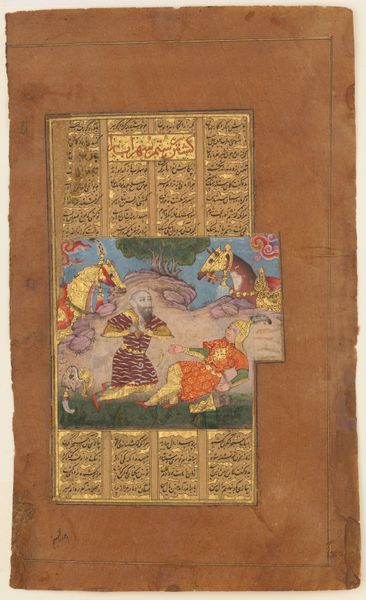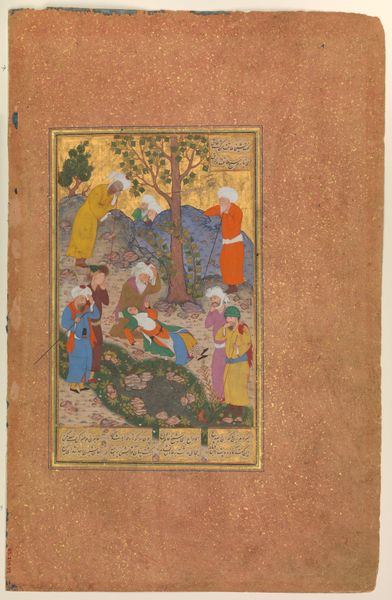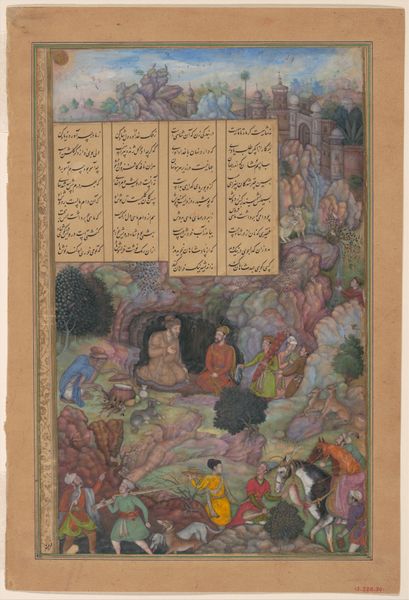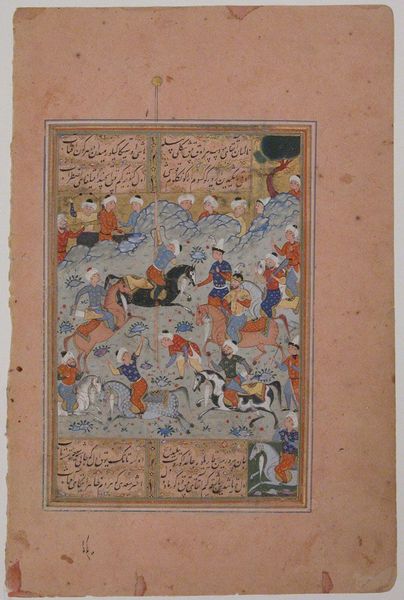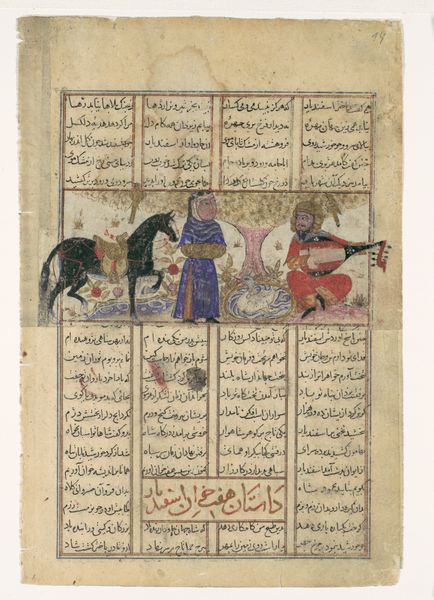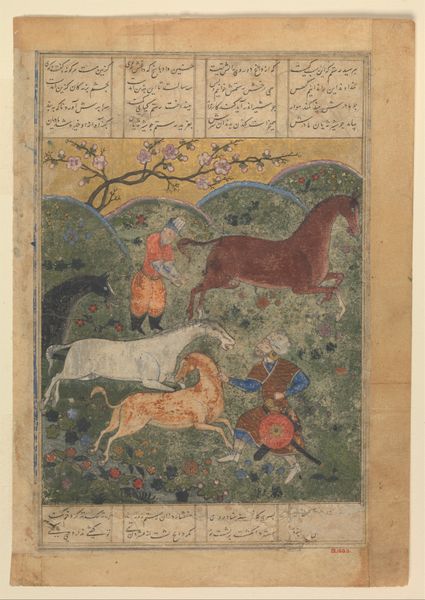
"Rustam Lassos Rakhsh", Folio from a Shahnama (Book of Kings) 1425 - 1475
0:00
0:00
painting, paper, watercolor
#
aged paper
#
toned paper
#
medieval
#
painting
#
landscape
#
figuration
#
paper
#
watercolor
#
coloured pencil
#
horse
#
men
#
islamic-art
#
miniature
Dimensions: Page: H. 10 1/4 in. (26.1 cm) W. 6 5/8 in. (16.8 cm) Text and painting box: H. 7 1/2 in. (19 cm) W. 5 in. (12.7 cm) Painting: H. 5 3/16 in. (13.1 cm) W. 4 11/16 in. (11.9 cm)
Copyright: Public Domain
Curator: This painting, attributed to Abu'l Qasim Firdausi, is titled "Rustam Lassos Rakhsh" and comes from a Shahnama, or Book of Kings. Created sometime between 1425 and 1475, it provides a glimpse into a vibrant era of Persian miniature painting. Editor: My first impression? It’s wonderfully chaotic. All these horses in various poses, like a freeze-frame of some dramatic moment. There's a lot of earthy color in the figures contrasted by the lighter ground. I wonder about the story. Curator: The Shahnama is an epic poem central to Persian cultural identity, filled with legendary heroes and tales. Rustam, the central figure in this scene, is the most celebrated hero of Persian mythology. His horse, Rakhsh, is known for its incredible strength and loyalty. The piece, worked in watercolor and coloured pencil on paper, represents a key scene. Editor: And the figures! Their faces are so carefully rendered, especially considering the size of the work, right? The expressions hint at tension, like something is about to happen, some climactic event. The clothing too speaks to something historical… Curator: Exactly! Notice the attention to detail in the figures’ attire, the weaponry, and the horses' harnesses. These details offer valuable insights into the material culture of the time. We see these depictions mirrored throughout the illuminated manuscripts and objects made at court. Editor: Looking closer, I can also sense an almost spiritual element. There's a flattened perspective here which I tend to see as a technique that rejects a Western form of perspective that sought after realism. Instead, in Islamic art the depiction pushes away from the material plane in a similar way that Islamic geometric patterns symbolize transcendence, rejecting the literal or corporeal for something bigger and higher. It asks a lot from the viewer! Curator: I agree. These miniatures weren't just illustrations, but elaborate visual interpretations meant to evoke contemplation and reflection on the narratives they presented. The layering of the paint, choice of pigments and gold detailing also contribute to the quality and purpose of the piece which elevates the figures outside of the constraints of regular people. It emphasizes Rustam's status. Editor: So, by showing Rustam, a figure tied to nationalism and legend, in this stylized scene, this piece subtly reinforces identity and tradition? And does that relate to our experience now in the present day? Curator: Absolutely. The Shahnama, even in fragmented folios like this, remains a powerful symbol. Editor: Thinking about these complex layers - history, technique, social context - it gives me a richer understanding of this cultural moment, the story, and how they spoke, and still speak, to audiences. Curator: Indeed. "Rustam Lassos Rakhsh" is not merely a historical artifact, it’s a vibrant encapsulation of cultural values and artistic practices that continue to resonate.
Comments
No comments
Be the first to comment and join the conversation on the ultimate creative platform.
